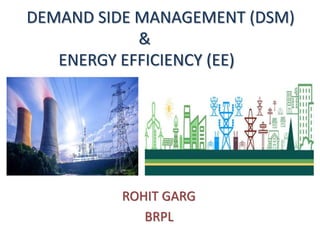The document discusses Demand Side Management (DSM) and Energy Efficiency (EE) in the context of electricity management. It outlines the principles of demand and supply, the role of utilities in balancing these, and how DSM strategies can influence consumer electricity usage through various programs and incentives. Additionally, it highlights India's electricity capacity, the importance of energy efficiency in reducing demand without compromising service, and the legislative background supporting DSM initiatives.





























































